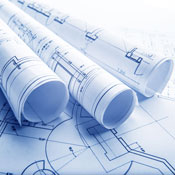 Within the food, beverage and organic goods industries, the choices you make for processing, engineering and automation can largely determine the success of your branding efforts in today’s crowded marketplaces. Establishing market value and gaining a strategic advantage against competition has never been more important for producers than it is today.
Within the food, beverage and organic goods industries, the choices you make for processing, engineering and automation can largely determine the success of your branding efforts in today’s crowded marketplaces. Establishing market value and gaining a strategic advantage against competition has never been more important for producers than it is today.
While improving production line speeds, adding new features, and distributing new product types can all help a brand excel, as much (if not more) of their success is determined by back-house process design; how well a company optimizes their engineering and development to expand a product’s market worth.
The most effective engineering and process design configurations are those that tackle production at every level, optimizing cost and capabilities in the following four areas:
- The engineering and design phase
- Equipment procurement and custom fabrication
- Programming controls and automation technologies
- Successful installation and commissioning
In this blog, we outline what it takes to improve your production through process design and automation.
Optimizing Design and Engineering
For the most effective process design and greatest branding, companies should first evaluate their engineering and design needs. What systems, automated technologies or services could you implement to better produce your products and expand processing capabilities? Identifying ideal solutions for your products and production lines is the first component of good process design.
To help your products stand out in highly competitive marketplaces, you’ll need to improve the way you create your goods internally; the actual systems used to manufacture your products. Custom-engineering these systems to optimize production is a key element of process design. Before settling on technologies or specific solutions, try identifying ways your company can improve product output and manufacturing efficiency, involving such factors as:
- Design and process consistency
- Measuring tools (instrumentation)
- Blending systems
- Heating and cooling
- Packaging solutions
- Product inspection technologies
Procurement and Custom Fabrication Needs
Once you’ve detailed what precise systems, equipment and tools are best suited for your production application, you will need to find ways to procure these systems. One-stop process design can help your company select and procure the right equipment for your products and floor-level production, with comprehensive Total Cost of Ownership (TCO). When implementing new technologies in your production line, you will always know where costs lie through effective process design, including:
- Initial cost and investment
- Spare part requirements
- Energy consumption
- Service availability
- Cost of product quality
Even if the ideal equipment or components for your production’s exact needs are not available, they can be custom built for your desired configurations, and fabricated to optimize their performance within your production lines. Expanding your processing capabilities while upgrading your existing systems is a core component of good process design.
If you’re striving to set your products apart from others in your market and grow your brand through floor-level efficiency, you’ll need to procure the right systems for the job.
Programming, Controls and Automated Technology
The most complete process design for food, beverage and pharmaceutical manufacturers goes beyond finding and procuring the best production systems; it also ensures the inclusion of high quality program controls and automation tech.
The entire success of your company’s production automation depends on the software, programming and control decisions you make during process design. To set your brand and products apart in competitive marketplaces, you can’t afford to fall flat on implementing programming tools and optimal control systems. The most thorough, high-return process design evaluates your technological needs as well as hardware, and helps you determine what systems to use, or software controls to upgrade.
Production engineering without proper attention to automation and programming will almost always deliver lesser results. Be sure to consider the ways process design can help your company improve:
- Distributed control systems (DCS)
- Supervisory Control and Data Acquisition (SCADA)
- Legacy control systems (PLC)
Flawless Installation of Complex Production Systems
The final piece of the process design puzzle is physically installing the procured systems and then commissioning engineers to optimize the complex start-up tasks. When evaluating your process design options, keep in mind the importance of professional installation and execution.
Often, the most successful and safe production engineering projects are capped with a dedicated team of contractors, vendors and onsite service technicians. Identifying the best systems, procuring technology and configuring ideal programming all mean little without excellent process installation.
One of the best ways to ensure successful production engineering is to work alongside a dedicated process design partner. When the time comes to upgrade your existing production equipment and improve your brand through optimized processing, working with committed process automation experts can make a world of difference.




